|
It’s time to look forward to next year and the most important job in September is to order your bulbs. Once they arrive, plant them as soon as possible - with the exception of the tulips, which are not planted out until cooler weather arrives. The reason for this is that it discourages a fungal disease called tulip fire (Botrytis tulipae), which causes grey-green lesions on the leaves and petals. For tulips then, store them somewhere cool and dry, away from mice and squirrels, and plant them anytime from late-October to Christmas, when the soil is frost-free.
Planting Tips

The general rule of thumb is to plant all your bulbs at least twice the depth of the bulb. Wear gloves if you have sensitive skin because some bulbs do irritate the skin (particularly hyacinths), and always wash your hands afterwards as they are often treated with a fungicide.
A small trowel is the most useful tool in the border, but a garden spade is best when planting in grass. Cut a foot-long v-shape in the grass, as if it were two sides of a triangle, and lift the v-shaped flap of turf. Break up the soil underneath with a garden fork and place the bulbs in the triangle and then stretch the flap of turf in your hands to distress it slightly. Replace the turf, trimming if you have to.
If you’re planting a border, avoid any straight lines unless it’s in a cutting garden. Randomly throw them on the ground and plant where they land. This looks far more natural. If it’s a large area and you have a small child, you can copy the famous Miss Ellen Willmott of Warley Place in Essex. She placed the small child in a wheelbarrow with a sack of bulbs and pushed it along whilst they showered the ground with bulbs.
Be Adventurous
|
| |
Recommended Tulips for Pots or Borders
Old Faithfuls
‘Ballerina’

This terracotta-orange lily-flowered tulip is also scented. It tones wonderfully well with the coppery tones of freshly emerging new rose foliage.
‘Barcelona’ and
‘Don Quichotte’

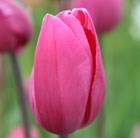
These are both award-winning pink Triumph tulips, Use them with dark, sultry single late tulips such as ‘Paul Scherer’, ‘Queen of Night’ or the double late...
‘Black Hero’
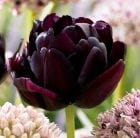
You can also use light-yellow with dark tulips (although leave out the pink) and 'Nicholas Heyek’ (a Triumph) will work well.
‘Orange Princess’
and ‘Prinses Irene’
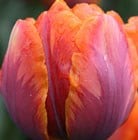
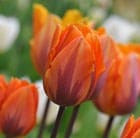
‘Orange Princess’, a sport from the fabulous 'Princess Irene’, are both first rate. They have purple shading on their nasturtium-orange flowers that can highlight dark tulips, or stand alone.
‘Spring Green’
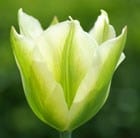
The classic white and green viridiflora tulip with flowers that last for ages and it does return.
‘Curly Sue’
and ‘Swan Wings’

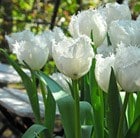
Both fringed tulips, so useful for adding a different texture. ‘Swan Wings’ is a pure white and ‘Curly Sue’ a purple-pink. Lovely when spring sunshine catches the fringed pinking.
Brave New Choices
‘Doll’s Minuet’
and ‘Violet Bird’
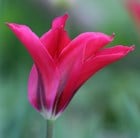
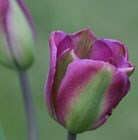
'Doll’s Minuet' is a small bright pink viridiflora tulip that has hardly any green. Perfect for a pot, because it’s almost like a butterfly about to take off. I also like the look of ‘Violet Bird’. Lots of green on the petals indicates a long-lasting flower.
‘La Belle Époque’
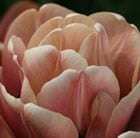
This peony-flowered tulip comes in a soft swirl of apricot and cream, with a drizzle of blueberry, so it’s perfect in a terracotta pot, or on its own, or with a mixture of purple tulips.
‘Victoria’s Secret’
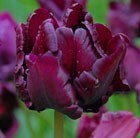
A windblown soft arrangement of purple, perfect for the vase or container.
‘Cairo’
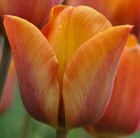
A golden Triumph tulip which can unite red and yellow planting, or dazzle with darks.
‘Fringed Elegance’
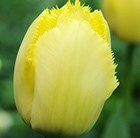
A subtle yellow fringed tulip of great beauty. There are not many good yellows, so this is a blessing.
‘National Velvet’
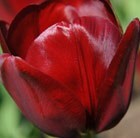
A deep, substantial red and very long lasting in the garden. This one will not disappoint in border or pot.
|
























